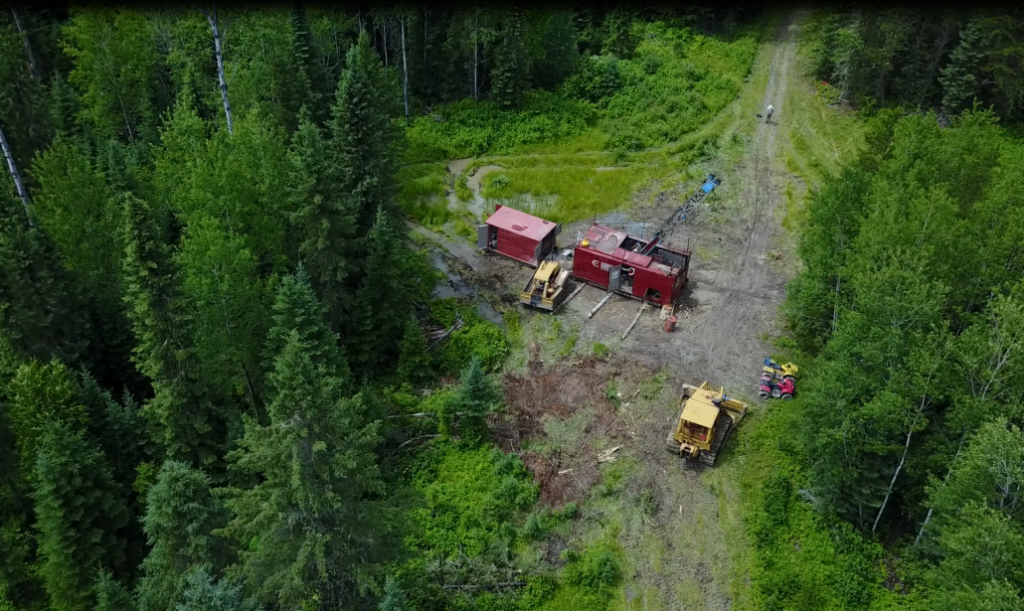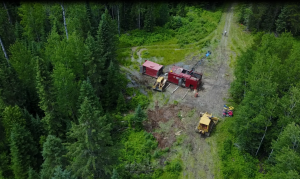Great Bear hits more shallow, high-grade gold at the LP Fault


 Drilling at Dixie Credit: Great Bear Resources[/caption]
Drilling at Dixie Credit: Great Bear Resources[/caption]
Great Bear Resources has released assay results for 22 holes drilled into the LP Fault at its Dixie project in Ontario’s Red Lake district. The most recent release includes results for 15 holes, drilled on sections 25 to 50 metres apart, completed along 100 metres of strike; and for seven more widely spaced holes that were completed along 500 metres of strike, 450 to 950 metres to the northwest.
The shallow drill highlights from the ‘high-density’ panel include 29.5 metres of 1.34 g/t gold from 18 metres; 66 metres of 1.31 g/t gold starting at 57.1 metres; and 19 metres of 3.24 g/t gold from 23 metres.
Deeper intercepts from this panel include 46.6 metres of 1.04 g/t gold starting at 417 metres; and 21.9 metres of 1.6 g/t gold from 474 metres and 34.1 metres of 2.44 g/t gold from 515 metres. These last two intervals are from a step-down hole, which hit multiple mineralized intervals – the 34.1-metre interval is the deepest intercept to date from the LP Fault zone.
The release states that, for these 15 holes, “high-grade and bulk-tonnage style gold intercepts were intersected at all sections and depths and demonstrate excellent continuity of the mineralized zone on these tight drill spacings.”
The seven widely spaced drillholes returned intercepts that include 22.2 metres of 1.18 g/t gold starting at 446.2 metres; 22.5 metres of 2.57 g/t gold from 170 metres; and 49.3 metres of 1.5 g/t gold starting at 190.8 metres. This drilling demonstrates “similar high-grade and bulk tonnage-type gold mineralization on all sections, at depths from bedrock surface to approximately 420 vertical metres.”
In the release, commenting on the 15 densely spaced holes, completed down to over 450 vertical metres, Chris Taylor, Great Bear’s president and CEO, notes how the continuity of the gold mineralization persists with higher-density drilling.
“We were very pleased to observe the same continuity of high-grade and bulk tonnage gold mineralization at the finer scale as we had previously seen with more widely spaced drilling.”
Great Bear has a $25-million exploration program planned for 2021 at Dixie, planning to drill over 130,000 metres. With 220 drillhole results published from the LP Fault to date, the company expects to complete up to 400 holes into the structure by the end of 2021. Last year, the explorer drilled 112,000 metres at the site, at a total cost of $23 million.
With closer-spaced drilling along the LP Fault, Great Bear has intercepted gold mineralization in all holes completed to date within the 4.2-km-long strike of higher-density drilling.
The 91.4-sq.-km project includes two exploration targets: mafic-rock hosted high-grade gold in quartz veins and replacement zones at the Dixie Limb and Hinge and Arrow zones as well as felsic sediment and volcanic-hosted high-grade disseminated gold with broad envelopes at the LP fault.
For more information, visit www.GreatBearResources.ca.
Comments